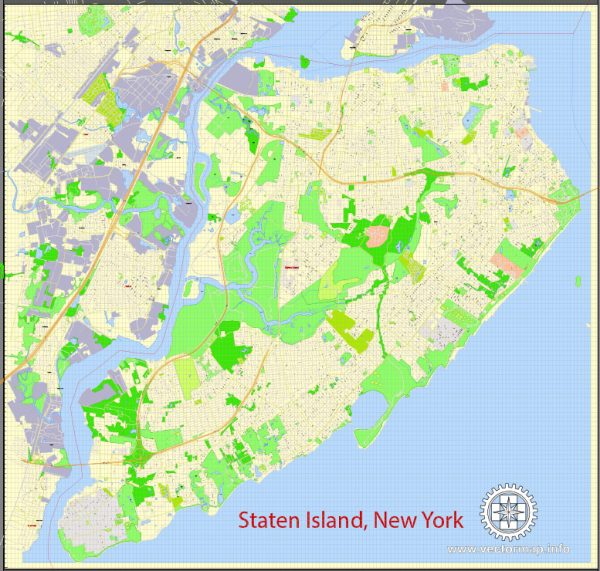Staten Island, one of the five boroughs of New York City, has a diverse socio-economic landscape. Here is a general socio-economic description of Staten Island:
- Population and Diversity: Staten Island has a population of over 500,000 people, making it the least populous of the five boroughs. The population is diverse, with a mix of ethnicities and backgrounds, including Italian, Irish, Hispanic, African American, and Asian communities.
- Income Levels: Staten Island’s income levels vary across neighborhoods. Some areas, especially those in the northern and eastern parts of the borough, have relatively high-income households. However, other areas, particularly in the southern and western regions, have a mix of middle-class and working-class neighborhoods.
- Housing: The housing market in Staten Island is quite diverse. While there are affluent neighborhoods with larger homes and waterfront properties, there are also more affordable areas with apartments and townhouses. The cost of living can be relatively high in certain parts of the borough.
- Education: Staten Island is home to several public and private schools, including elementary, middle, and high schools. It is also the location of the College of Staten Island, part of the City University of New York (CUNY) system.
- Employment: The borough has a mix of job opportunities, with employment options in healthcare, education, retail, and government services. Many residents commute to Manhattan or other boroughs for work, as job availability varies.
- Transportation: The Staten Island Ferry provides a vital transportation link to Manhattan. While the borough has a network of buses and the Staten Island Railway, it is known for having a higher reliance on private cars due to its suburban layout.
- Quality of Life: Staten Island offers a relatively quieter and more suburban lifestyle compared to the other boroughs of New York City. It has several parks, including the Staten Island Greenbelt and Gateway National Recreation Area, offering outdoor recreational opportunities. The area is known for its scenic beauty, especially along the waterfront.
- Challenges: Like any urban area, Staten Island faces socio-economic challenges. These include income inequality, access to affordable housing, and, at times, limited access to certain services and amenities.
It’s important to note that Staten Island’s socio-economic conditions can vary significantly between neighborhoods, with some areas being more affluent and others facing greater economic challenges. Please keep in mind that socio-economic conditions may change over time, so it’s advisable to consult more recent data and sources for the most up-to-date information on Staten Island’s socio-economic landscape.


 Author: Kirill Shrayber, Ph.D.
Author: Kirill Shrayber, Ph.D.